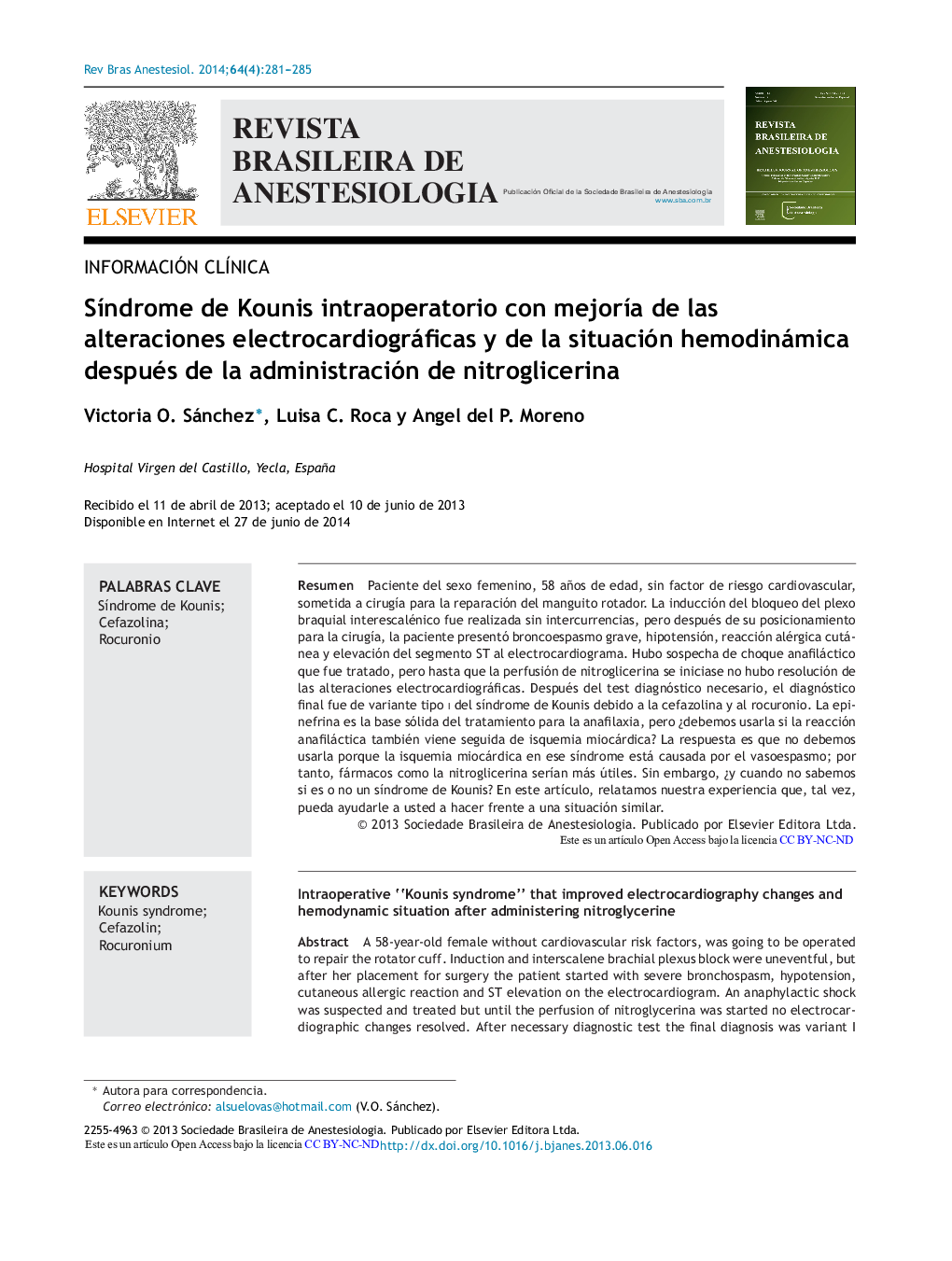| Article ID | Journal | Published Year | Pages | File Type |
|---|---|---|---|---|
| 2749875 | Brazilian Journal of Anesthesiology (Edicion en Espanol) | 2014 | 5 Pages |
ResumenPaciente del sexo femenino, 58 años de edad, sin factor de riesgo cardiovascular, sometida a cirugía para la reparación del manguito rotador. La inducción del bloqueo del plexo braquial interescalénico fue realizada sin intercurrencias, pero después de su posicionamiento para la cirugía, la paciente presentó broncoespasmo grave, hipotensión, reacción alérgica cutánea y elevación del segmento ST al electrocardiograma. Hubo sospecha de choque anafiláctico que fue tratado, pero hasta que la perfusión de nitroglicerina se iniciase no hubo resolución de las alteraciones electrocardiográficas. Después del test diagnóstico necesario, el diagnóstico final fue de variante tipo i del síndrome de Kounis debido a la cefazolina y al rocuronio. La epinefrina es la base sólida del tratamiento para la anafilaxia, pero ¿debemos usarla si la reacción anafiláctica también viene seguida de isquemia miocárdica? La respuesta es que no debemos usarla porque la isquemia miocárdica en ese síndrome está causada por el vasoespasmo; por tanto, fármacos como la nitroglicerina serían más útiles. Sin embargo, ¿y cuando no sabemos si es o no un síndrome de Kounis? En este artículo, relatamos nuestra experiencia que, tal vez, pueda ayudarle a usted a hacer frente a una situación similar.
A 58-year-old female without cardiovascular risk factors, was going to be operated to repair the rotator cuff. Induction and interscalene brachial plexus block were uneventful, but after her placement for surgery the patient started with severe bronchospasm, hypotension, cutaneous allergic reaction and ST elevation on the electrocardiogram. An anaphylactic shock was suspected and treated but until the perfusion of nitroglycerina was started no electrocardiographic changes resolved. After necessary diagnostic test the final diagnosis was variant I of Kounis syndrome due to cefazolin and rocuronium. Ephinephrine is the cornerstone of treatment for anaphylaxis but should we use it if the anaphylactic reaction is also accompanied by myocardial ischemia? The answer is that we should not use it because myocardial ischemia in this syndrome is caused by vasospasm, so it would be more useful drugs such as nitroglycerin. But what if we do not know if it is a Kounis syndrome or not? In this article we report our experience that maybe could help you in a similar situation.
